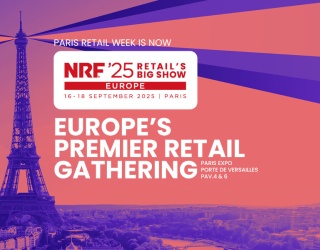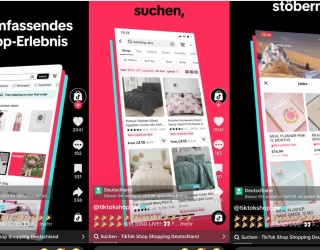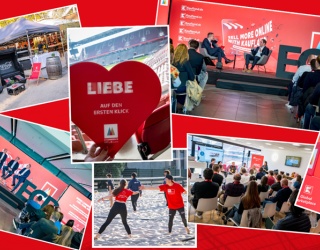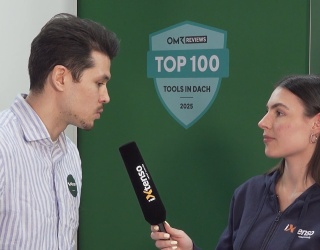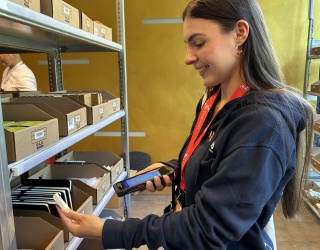
To understand what services customers expect today, retailers should know exactly what touchpoints their customers use to get in touch. Only then can they align their sales approach, advertising and services accordingly. Robert Wucher, Digital Expert at GfK, knows the customer journey in the various product categories and what services retailers should definitely offer.
Mr. Wucher, how has the customer journey changed in the past few years?
The change in the customer journey started with the entry into the age of electronic commerce which now dates back several years. Thanks to the emergence of more and more online stores, consumers had an alternative to brick-and-mortar retail that went beyond the classic mail order business and also the chance to get informed about the different brands, products and services before purchasing these items online.
The fundamental change in the customer journey we were able to witness during the past few years is due to the mobile aspect: today, smartphones are the most important vehicles for consumers to go online. We know from our Crossmedia Link Panel that two-thirds of online access happen via smartphones and 87 percent of which via apps. This is why the way eCommerce providers expand their reach has also changed. Even when desktop offers still achieve the larger range, with many large providers such as Amazon, Ebay, Ikea, MediaMarkt or Zalando, desktop and mobile range are already at a similar level – and this impacts the customer journey, of course.
How does the customer journey differ across the various product categories?
Today eCommerce enjoys a high degree of maturity and yet the level of development clearly differs between the different product categories. We know from our consumer and retail panels that almost every other Euro Germans spend in the travel area flows into the online channel. At the other end of the spectrum are the fast moving consumer goods, where the value-based eCommerce percentage is barely one percent. This doesn’t sound like much, yet at more than one billion Euros in sales volume in 2014, there is a significant volume. What’s more, we expect strong growth for FMCG over the next years; just in 2015 alone we assume 33 percent.
All of the other product categories lie between the two extremes of travel and fast moving consumer goods. However, the purchase is only the end of the customer journey, which generally starts with a triggering moment and continues with gathering information. Here we also see big differences between the product categories. It’s not surprising that the use of digital touchpoints increases with the relevance of online purchases, meaning the more people buy online in one category, the more online touchpoints are also being used before the purchase.
What’s interesting is that despite the comparatively minor importance of eCommerce, digital touchpoints already play a significant role in the customer journey in individual FMCG product groups, such as baby food and chocolate for instance. We can intuitively understand this with baby food for example when you think about people researching the ingredients. However, when it comes to chocolate, the thought of online research prior to a purchase is rather counterintuitive. Yet here this is generally not about research. In fact, online touchpoints are used in this case after a corresponding trigger such as a TV spot, for example, references the brand website that is subsequently being visited.
This shows that customer journeys differ depending on the motivation – and it in turn is very category-specific: when research and comparison take center stage, the customer journey tends to be broad, long and complex. Booking an all-inclusive vacation package is a great example of this: before a purchase- regardless of whether it’s online or offline – consumers visit 11.1 different websites on average and take 35.6 days to reach their purchase decision. This is different for more impulse-based categories like baby food. Here, the purchase decision is reached after only 2.4 days and by visiting 1.8 different websites.
Which touchpoints are the most important ones today?
Keeping the online percentage of the customer journey in mind, with one exception, this also greatly depends on the category. The exception is retailer websites that represent an important touchpoint across all categories. The relevance of other online touchpoints depends on why people buy. With categories that depend on the brand such as hair color and chocolate, the websites of manufacturers are very important reference points.
And so your very own online brand presence in these categories is more important than ever – and even for offline purchases. Not only as part of a brand communication strategy but with an immediate effect on sales: we discovered that when the consumer has visited the brand’s website before reaching the purchase decision, the percentage of sales for the brand increases 44 percent on average. This begs the question how website traffic for the brand website can be generated beyond SEM and SEO. This is where offline touchpoints provide great opportunities. FMCG websites, in particular, can increase traffic through TV ads; the top 20 percent of the TV spots we analyzed increased traffic on the brand website by 16 percent and more.
Today customer service is wanted on all channels. What services do retailers need to provide at which touchpoints?
Today’s consumers primarily want a ”seamless customer journey“, meaning a seamless integration of the online and offline world. This makes retailers face disruptive challenges but also gives them the chance to differentiate their business from the competition through corresponding services. The spectrum of possibilities is very broad. It begins with very simple services like picking up an order made online on-site at the store. Other possible options are the digitization of the physical POS, starting with mobile payment, via interactive shopping options even after store opening hours (for instance via QR codes displayed at the storefront or in the shop window), entertaining and practical formats such as digital or social mirrors all the way to the use of beacon technology to deliver personalized offers and rewards to registered customers when they enter the store.
Interview: Daniel Stöter, iXtenso.com




